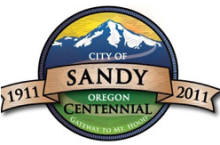Oregon Town To Build Open Access Fiber Network Complement to Wireless Network
Sandy, a growing community of about 10,000 outside Portland in Oregon, is now building a FTTH network to expand on their successes offering city-run wireless broadband in 2003. They've done the whole wireless thing for 8 years but understand the future is high capacity, high reliability connections.
They are starting with a pilot program that seized on energy created by Google's gigabit initiative -- they held a "Why Wait for Google?" contest that asked neighborhoods to show their potential interest in a fiber-optic network.
When the Cascadia Village and Bornstedt Village won the contest, they were asked how they wanted to be involved:
What happens now? This is a pilot program, so we’re taking it step-by-step. We want the residents and property owners in Cascadia/Bornstedt Villages to be partners with us in making decisions on how this service will work. And we want it to be democratic: whatever we do, it will only be with the support of the majority of the residents and property owners who get involved. The first thing we need to know is: how would you like to be involved? We have a lot of options, depending on your level of interest, and how busy your life is. On one end of the spectrum is simply asking us to keep you informed through e-mail or letters, and at the other end is your active participation (over a course of several meetings) in the detailed planning for the implementation of this pilot project.



